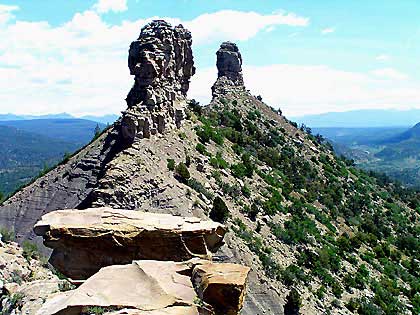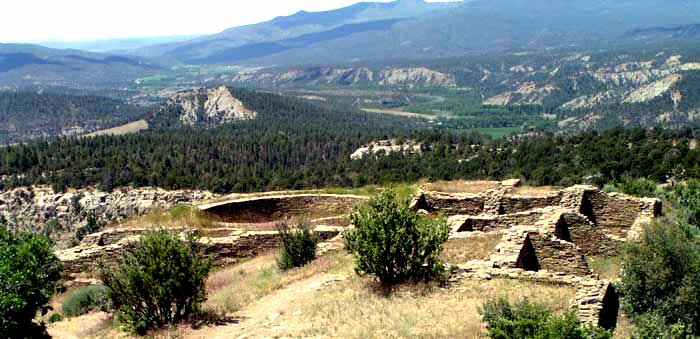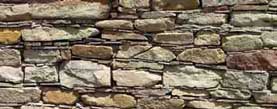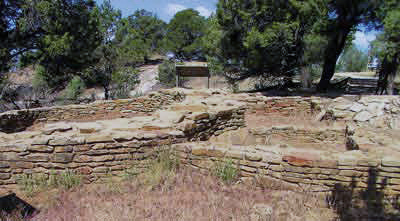A. Brockway's Ancient Southwest— Report #7 (Part II)

For someone accustomed to ruins in Chaco Canyon and nearby, finding a Chacoan great house perched on a narrow mesa in Colorado, 7600 feet above sea level in the midst of forested Rocky Mountain foothills seems anomalous at best. And that it is.

 |
Located about twenty miles west of Pagosa Springs, Colorado, the Chacoan great house, over which rise the two sandstone "chimneys," would be right at home in the San Juan Basin. It seems quite out of place where it is. Yet its masonry veneer simply screams "Chaco!" The question that arose at Guadalupe is no less appropriate at Chimney Rock: What is it doing there? |
 |
Several solutions have been proposed but, before getting to them, a little geographical and demographic context is in order.
The Chacoan great house on the Upper Mesa by the "chimneys" rests in splendid isolation from eight small house "villages" (most have not been excavated and stabilized), which sit on the Lower Mesa and the terraces above the Piedra River flood plain. The small houses on the terraces were different from those on the Lower Mesa, which were of a unique Chimney Rock style (Jalbert and Cameron 2000: 85). And, of course, neither of them was Chacoan. As always, dating tells the tale. Apparently, the river terrace sites were the first occupied (925-1050) followed by those on the Lower Mesa (1000-1125) (Eddy 1993: 17). The Chacoan great house on the Upper Mesa—totally unlike anything else at Chimney Rock—seems to have been built rather quickly in the 1090s (Lister 1997: 102). |
 |
These two sets of data—different construction styles and chronological sequence—lead to the obvious conclusion that the Chacoan builders were an intrusion into the life of already settled Chimney Rock villagers. Who were these Chacoans? Why did they come? What did they do when they got there? How did they relate to the locals? And who were the locals, anyway?